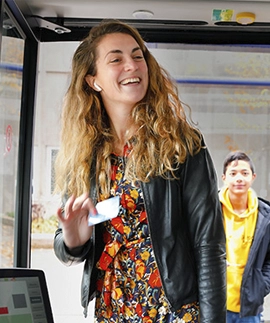Supported by its awareness of the challenges surrounding security on transport, Keolis acts alongside public transport authorities to guarantee safer, more inclusive mobility. This commitment takes shape through technical, material and people-centred solutions that can be used concurrently.
Improving lighting, installing video protection and increasing the accessibility of emergency call interphones all help reinforce security in public areas and on transport networks. Specific notification solutions are also deployed, such as the UMAY app in Lyon on which passengers can share their location with their entourage, or the “Ask for Angela” initiative in Bordeaux which offers immediate support to anyone feeling in danger. In terms of human assistance, Keolis trains its employees in the 5D rule (distract, delegate, document, delay and direct) from the Stand Up programme so that they can respond immediately to cases of harassment.
The Group is also testing solutions designed to meet passenger needs, including alighting on request, which has already become standard practice in Rennes, and exploratory walks, conducted in Lille to identify and improve areas considered unsafe. Outside France, initiatives such as Manchester’s Safer Streets, which combines more staff on the ground and an alert system, have helped bring incident numbers down.
Because insecurity must not become an obstacle to mobility, Keolis continues to work hard every day to make transport safer and more accessible for everyone.



